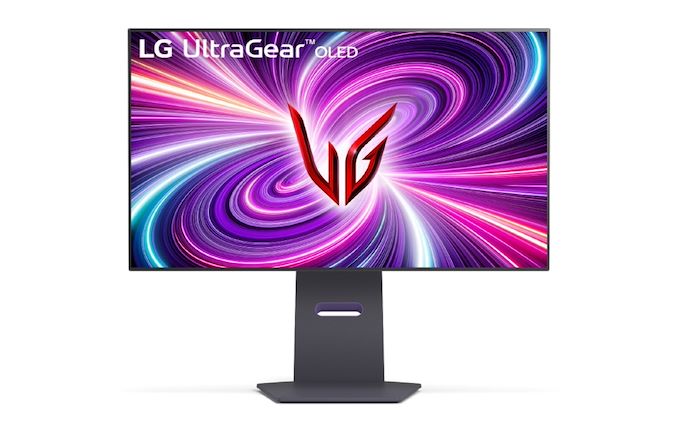Ahead of next week’s CES 2024 trade show, this morning VESA is releasing an update to their Adaptive-Sync Display variable refresh certification standard to accommodate some forthcoming “dual-mode” gaming displays. Under the new Adaptive-Sync Display 1.1a standard, display manufacturers will now be able to certify displays that have multiple resolution-dependent maximum refresh rates – chiefly, those displays offering high refresh rates at high-DPI resolutions such as 4K, and even higher refresh rates at 1080p and the like. The 1.1a version of the standard is also being updated to support displays with overclocked modes, allowing display manufacturers to get those modes separately certified on top of their default modes.
Displays offering higher maximum refresh rates at lower resolutions are not strictly a new innovation in the space, but PC enthusiasts are likely to be more familiar with the concept with 4K TVs. Constrained by the available cable bandwidth of the time, HDMI 2.0-era sets such as LG’s C8 OLEDs could offer either 60Hz support at 4K, or 120Hz support at 1080p. And while the concept has fallen by the wayside a bit since the arrival of HDMI 2.1, it has not gone away entirely. Now, as we go into 2024, VESA and its display manufacturing members are preparing to launch a new generation of PC gaming displays that employ the dual-mode concept to allow for even higher refresh rates at lower resolutions.
To that end, the Adaptive-Sync Display standard is being updated to include certification testing criteria and branding to explicitly support and promote these dual-mode displays. According to VESA, the testing criteria itself hasn’t changed – in fact, for existing 1.1-certified monitors, everything is identical – but rather the specification is laying out how manufacturers can get both modes certified. In other words, manufacturers will be able to get their wares validated as meeting the Adaptive-Sync Display standard’s variable refresh performance requirements in both high-resolution and high-refresh modes.
To go with this new certification program, the Adaptive-Sync Display logo program has also been updated to reflect these results. Certified dual-mode displays will list both modes they’re certified for, with the logo to include the refresh rate and the resolution.
In VESA’s example, their fictitious product is a 4K display that offers a 144Hz maximum refresh rate at 4K, and 280Hz at 1080p. For vendors that do choose to seek dual-mode certification, VESA is requiring that the high-resolution mode support a maximum refresh rate of at least 144Hz, while the high-refresh mode’s resolution not be any lower than 1080. The net result is that the new dual-mode specification is primarily geared towards 4K monitors since it’s a multiple of 1080p, but it’s not exclusively baked into the spec. Otherwise, displays will need to support all of the feature requirements of Adaptive-Sync Display, including flicker-free operation and fast G2G transition times.
Meanwhile, reading between the lines on VESA’s press release ahead of CES, it would appear that the addition of dual-mode certification to the Adaptive-Sync Display standard – and indeed the creation of the displays themselves – is being driven by the same bottleneck that lead to dual-mode TVs in the last decade: display cable and processor bandwidth limitations. While DisplayPort 2.1 is already the fastest display cable standard around, with UHBR 20 mode offering almost 80Gbps of bandwidth, few source devices offer that much bandwidth. AMD restricts UHBR 20 mode support to its Radeon Pro cards, and NVIDIA’s current-generation Ada Lovelace (RTX 40 series) hardware doesn’t support DisplayPort 2.x at all. So while forthcoming 4K displays can refresh at upwards of 480Hz, the bandwidth to do so at 4K isn’t consistently there.
The end result is that, depending on whether you’re a glass half-full or half-empty kind of person, high-end gaming displays are either being given the opportunity to increase their refresh rates at low resolutions, or they’re having to cap their refresh rates at high resolutions. Either way, without the bandwidth necessary to drive 4K at 480Hz and similarly high resolutions, display vendors are needing to separate maximum refresh rates by resolution to accommodate what contemporary hardware can actually provide.
Meanwhile, although the VESA consortium itself doesn’t announce any products, but both LG and ASUS have been teasing dual-mode gaming displays in the last couple of months, which in turn we’re expecting to see in greater detail at CES. LG has the forthcoming LG 32GS95UE, which is pictured at the top of this article and offers a 32-inch 4K WOLED display with maximum refresh rates of 4K@240Hz and 1080p@480Hz. ASUS, in turn, will be using that panel for their ROG Swift PG32UCDP, offering the same 4K@240Hz and 1080p@480Hz modes. We’ll likely see more displays from more manufacturers in due time, but given the popularity of their OLED displays, LG alone is enough to move the gaming market.
Moving on, the Adaptive-Sync Display 1.1a specification is also adding support for what the group classifies as “overclocked” displays – that is, monitors offering a faster mode that is not enabled by default in the out-of-the-box factory configuration. Under the updated spec, OEMs who offer monitors with overclocking modes will be allowed to pursue a higher Adaptive-Sync Display certification level (i.e. a higher logo’d refresh rate), so long as they can pass the standard’s requirements in both factory and overclocked modes. Notably, the VESA is also requiring that overclocked displays “must support Adaptive-Sync-enabled GPUs in a non-proprietary manner”, which seems intended to shortcut any G-Sync-exclusive shenanigans.
At this time we aren’t immediately aware of any forthcoming monitors that would rely on the new overlcocking rules. But given the market-driven nature of VESA’s standards, we’d assume such displays are right around the corner, just like dual-mode gaming displays.
Regardless, expect to hear more from the CES show floor next week as manufacturers begin talking about their next generation of gaming displays.




